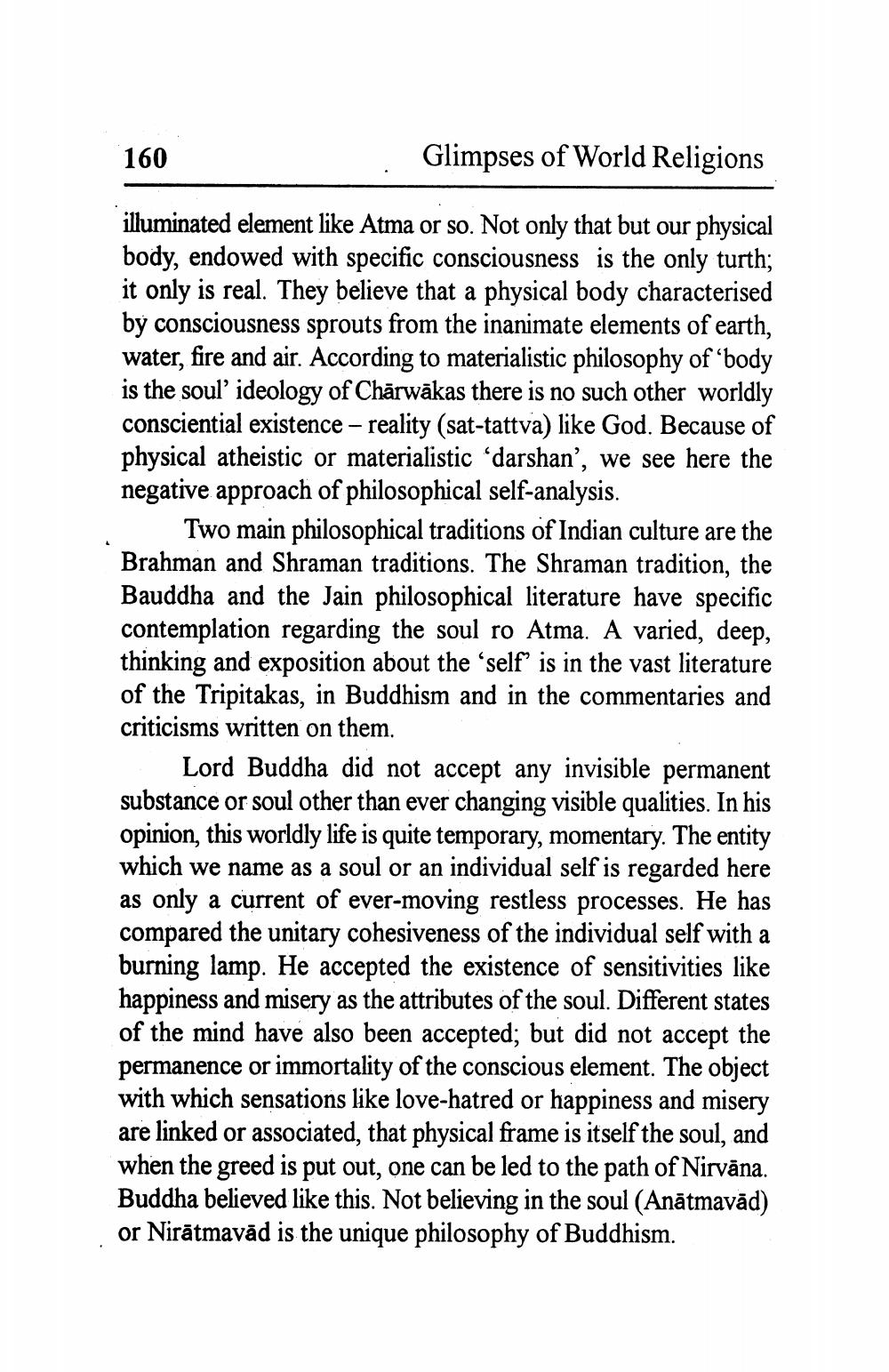________________
160
Glimpses of World Religions
illuminated element like Atma or so. Not only that but our physical body, endowed with specific consciousness is the only turth; it only is real. They believe that a physical body characterised by consciousness sprouts from the inanimate elements of earth, water, fire and air. According to materialistic philosophy of 'body is the soul ideology of Chārwākas there is no such other worldly consciential existence – reality (sat-tattva) like God. Because of physical atheistic or materialistic ‘darshan', we see here the negative approach of philosophical self-analysis.
Two main philosophical traditions of Indian culture are the Brahman and Shraman traditions. The Shraman tradition, the Bauddha and the Jain philosophical literature have specific contemplation regarding the soul ro Atma. A varied, deep, thinking and exposition about the ‘self” is in the vast literature of the Tripitakas, in Buddhism and in the commentaries and criticisms written on them.
Lord Buddha did not accept any invisible permanent substance or soul other than ever changing visible qualities. In his opinion, this worldly life is quite temporary, momentary. The entity which we name as a soul or an individual self is regarded here as only a current of ever-moving restless processes. He has compared the unitary cohesiveness of the individual self with a burning lamp. He accepted the existence of sensitivities like happiness and misery as the attributes of the soul. Different states of the mind have also been accepted; but did not accept the permanence or immortality of the conscious element. The object with which sensations like love-hatred or happiness and misery are linked or associated, that physical frame is itself the soul, and when the greed is put out, one can be led to the path of Nirvāna. Buddha believed like this. Not believing in the soul (Anātmavād) or Nirātmavād is the unique philosophy of Buddhism.




